Based upon the History of Grand Seiko, as presented by Seiya K., this series of watches began in 1960 as Seiko's attempt to prove that they were capable of producing watches competitive in quality to those of the finer Swiss manufactures. The line evolved through 7 distinct generations, culminating in the products introduced in 1970 for which Seiko discarded the traditional method of ensuring quality by hand-selecting and hand-finishing the movement parts in favor of advanced engineering , machining and automation. The impact of this change in philosophy was never realized because the series went out of production in 1974, evidently never to return.
However, Seiko did decide to reintroduce the Grand Seiko watches in 1998, and sells a fairly extensive line of automatics regionally. The handwound models seem to be sold as "limited editions", the only other example of which I have been able to find is this solid gold version labeled "120th Anniversary" (pictures are apparently stock photos from the manufacturer):
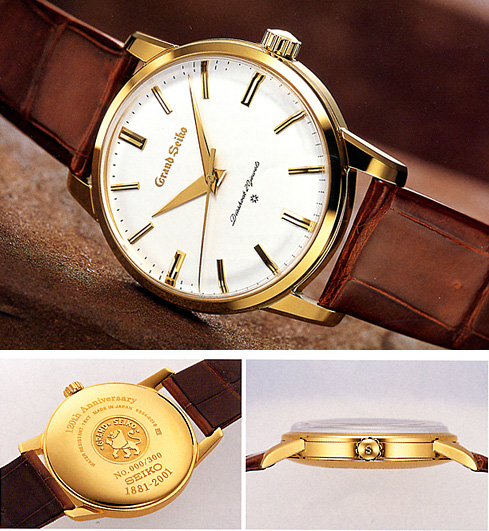
The current watch seems to have been released at about the same time, and is cased in stainless steel at about half the price. Although both models use the same 9S54A movement, they appear to be entirely distinct in most respects, sharing only the hand shape and unique domed and raised sapphire crystal. This latter seems the result of Seiko's decision to use a domed dial mounted almost flush with the bezel, and hands mounted even higher. Optically, this (perhaps in concert with an anti-reflective coating) creates a very distinct sense of depth, and results in the appearance of a highly reflective "ring" around the dial, as seen from the inside when the watch is tilted.
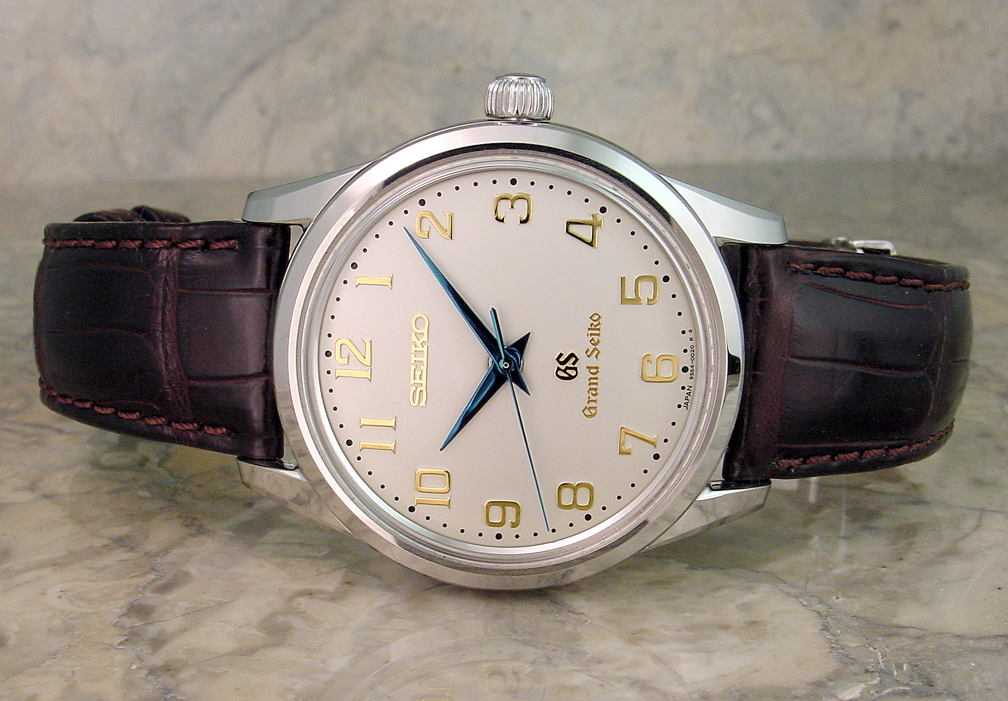
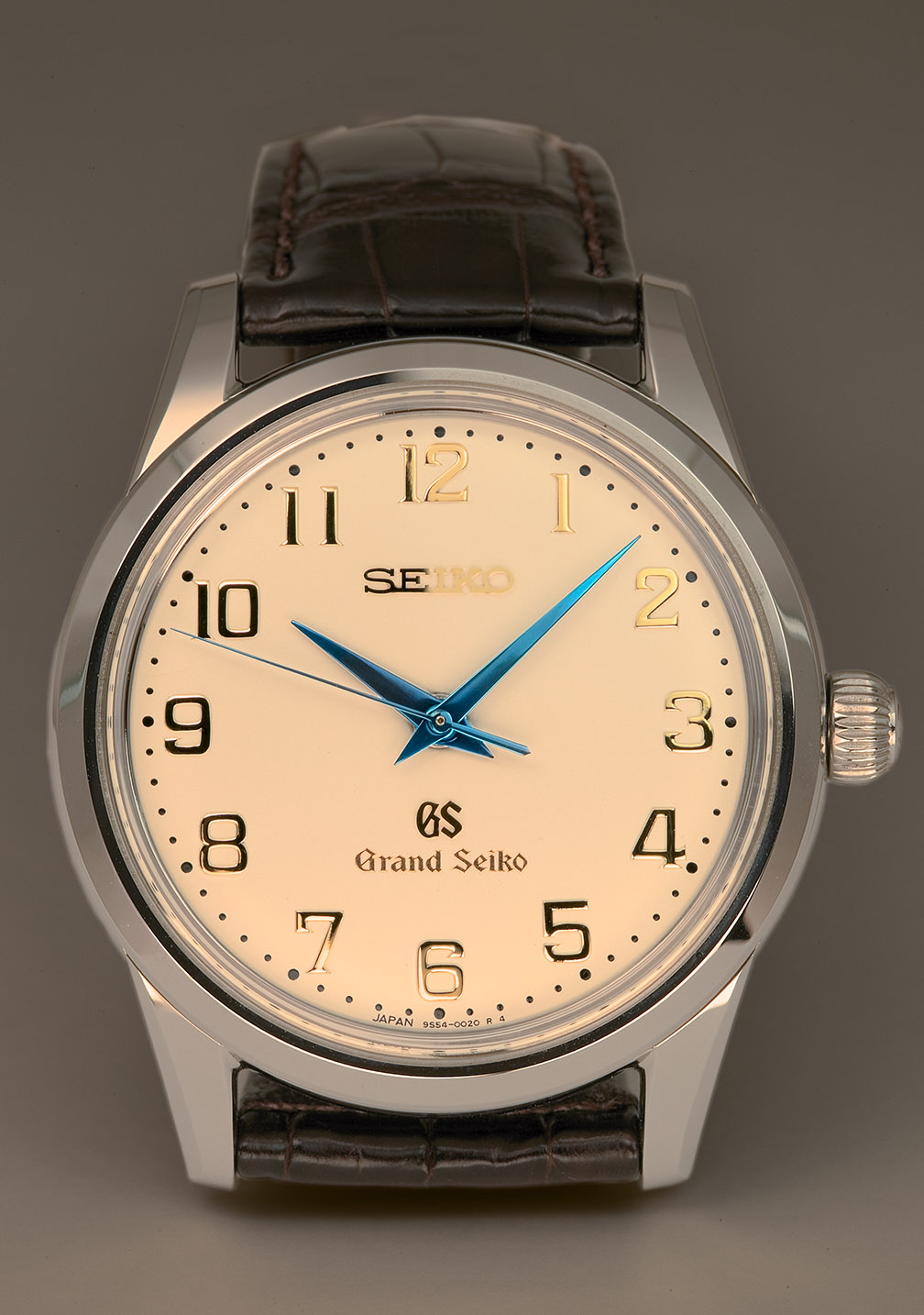

Unfortunately I have not been able to locate any detailed pictures or diagrams of this movement, and it is constructed so that it is largely hidden. From my examination, I believe that the finishing and decoration has indeed been done by machine. Seiko claims that the unseen parts are finished to the same standard, and I don't see why they should not be, under the circumstances. There is no anglaging of the bridges, wheels or screw slots, instead they are cut almost razor-sharp, but with no burrs visible under a 4x loupe. The "sides" of the bridges are milled to an almost mirror quality, and appear exceptionally true and smoothly curved. The visible side of the top plate is matte finished, and the bridges sport stripes which are perfectly aligned and suggest great visual depth.
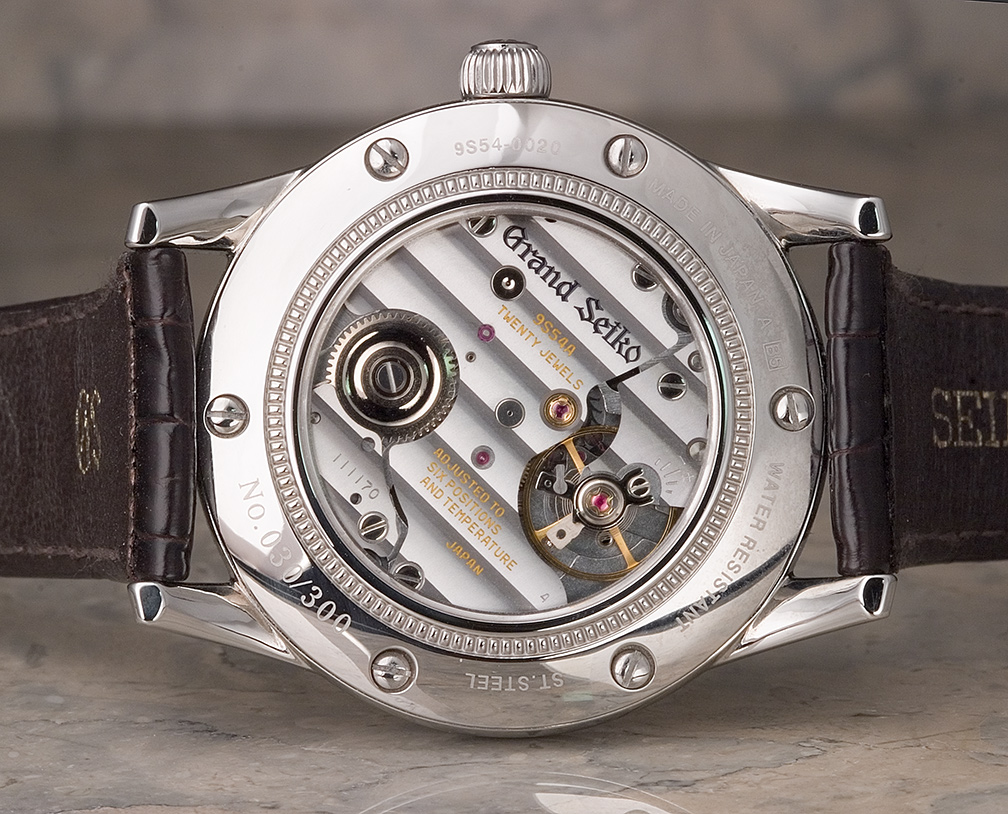
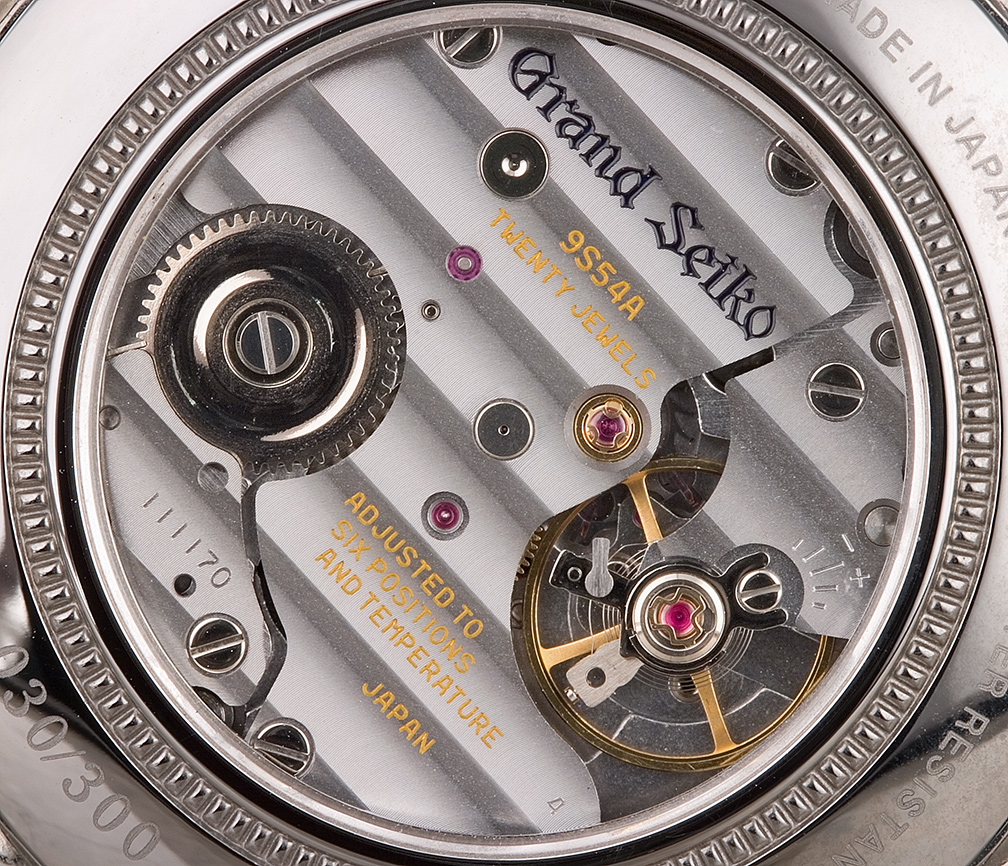
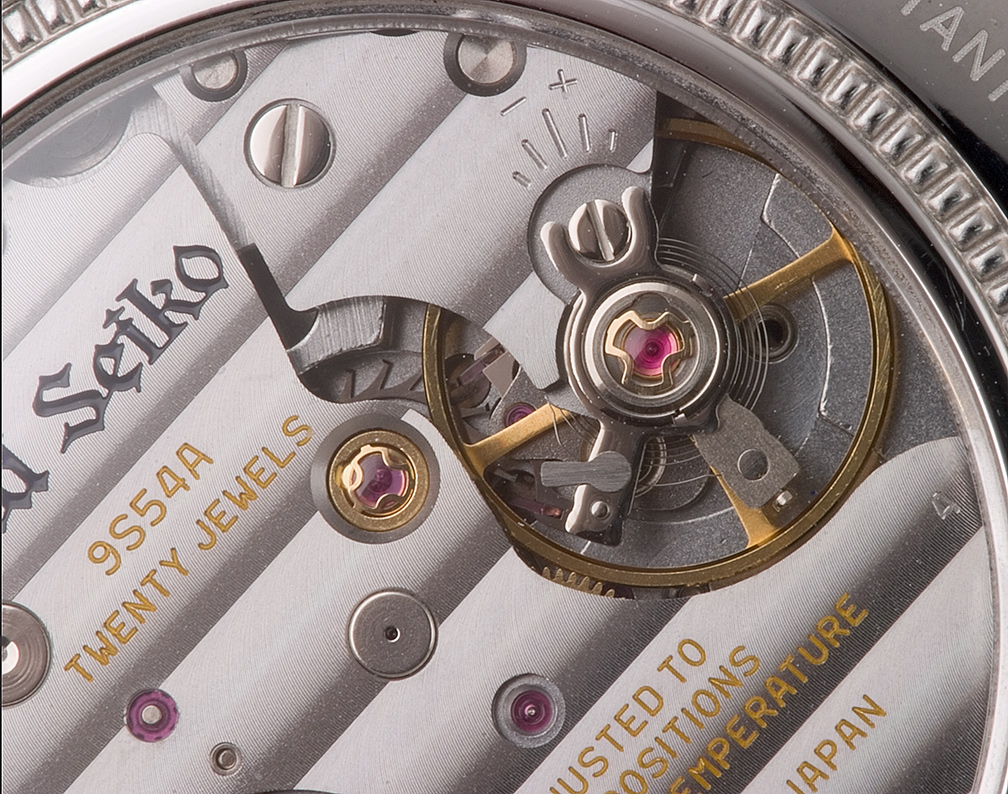
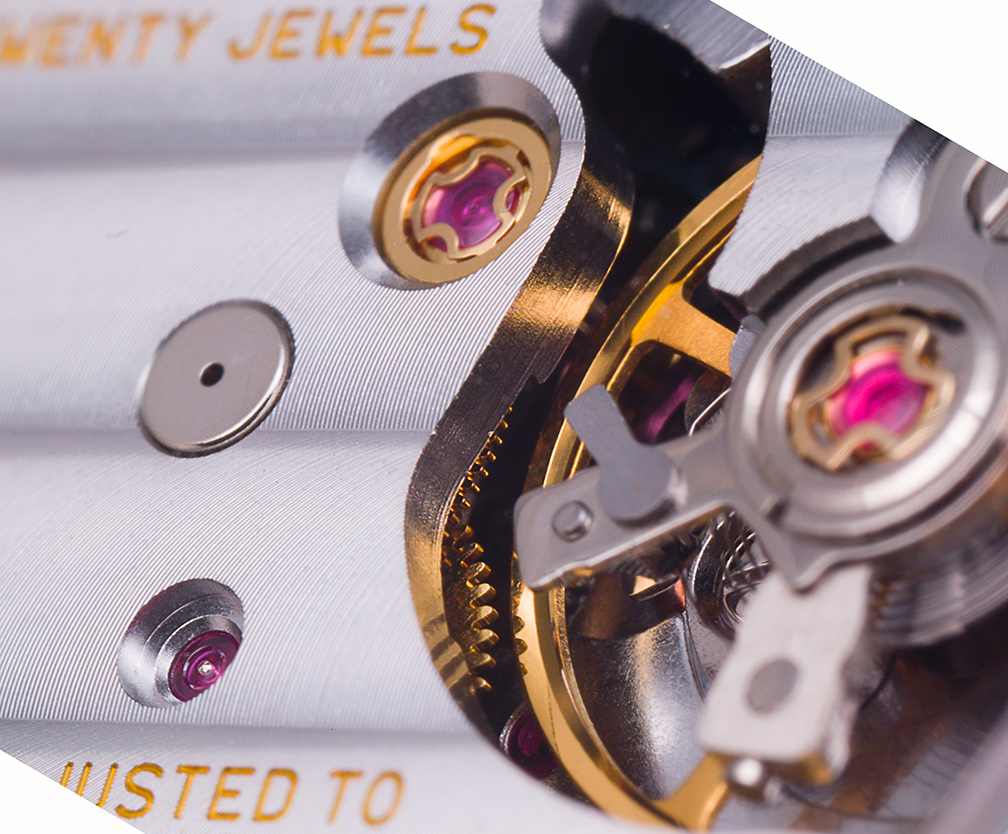
Whether or not this approach to the production of high-end mechanical watches is worthy and appreciated will be determined by the design and execution of that hidden movement, and the watch as an aesthetic whole, and by the marketplace. Certainly Seiko has taken their own road and determined their own ethos in presenting these watches on this far side of the quartz revolution. Personally, I am not disappointed in the least, and frankly think that one should not be surprised by this approach. The emphasis is on performance and durability and this is wholly appropriate to the company, and if one must look for comparables among the European brands, I would suggest suggest that IWC is the most fitting, in philosophy and price, if not design, and possibly Rolex's dressier models.
All in all, a most distinctive watch, an unusual mix of traditional design and thoroughly modern execution. The Grand Seiko is the realization of a very independent company's vision of Quality, and requires no other justification, just understanding.
In addition to Kseiya's msot informative article linked above, Wayne Lee has posted an article on his wonderful collection of Seikos, which I highly recommend.

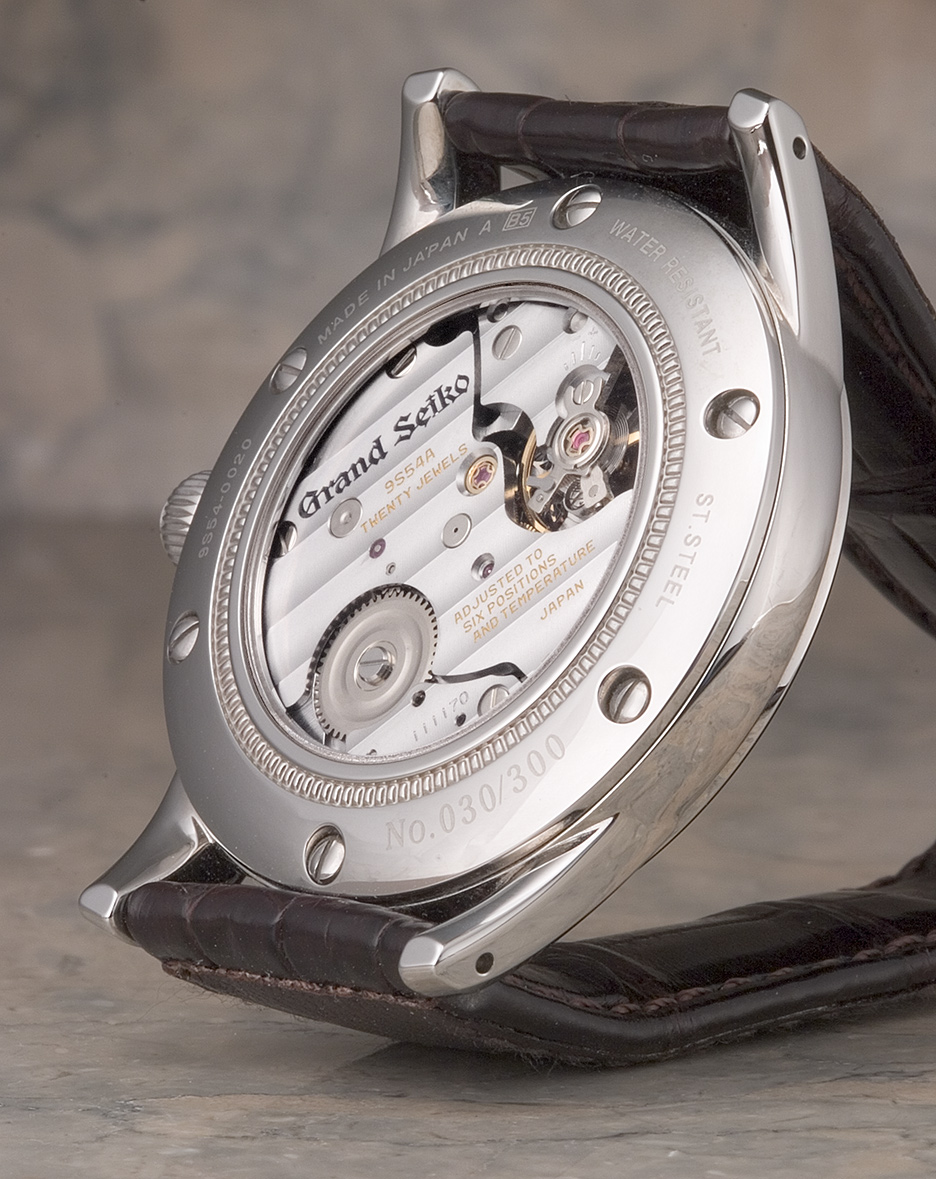
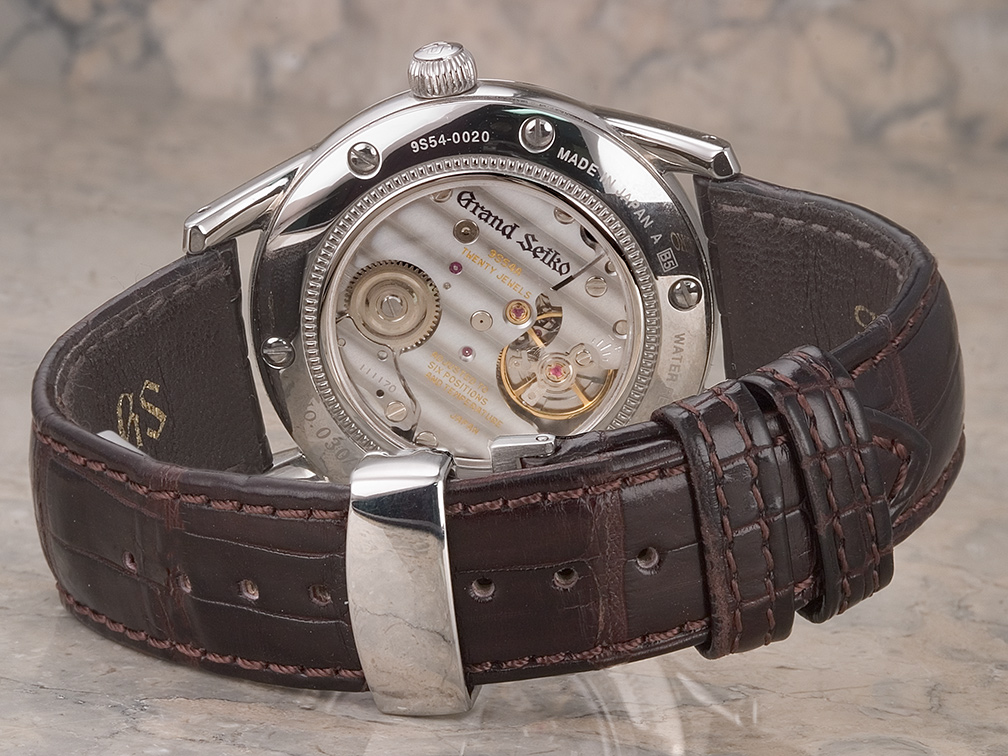
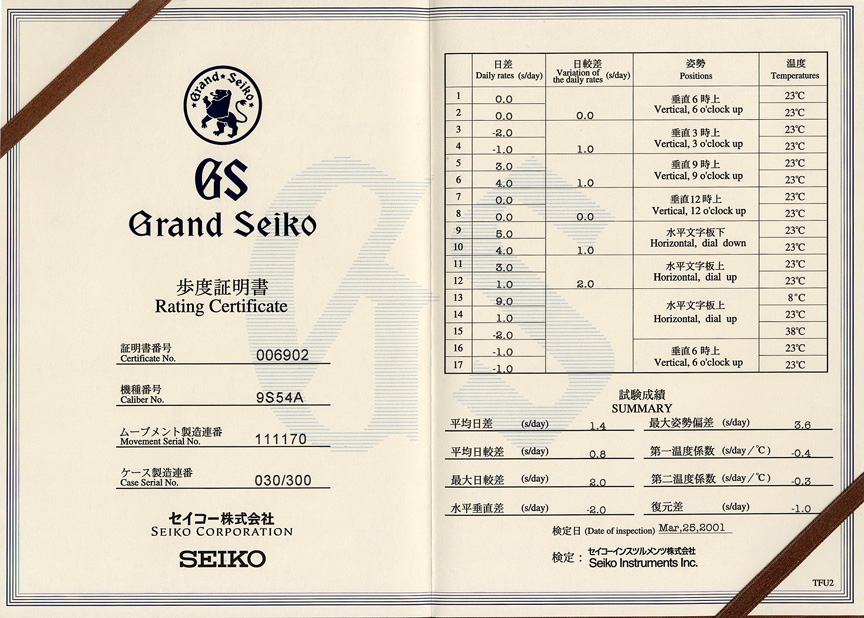
I hope you enjoyed this!
SteveG
November 1, 2001
All content Copyright asserted 2003